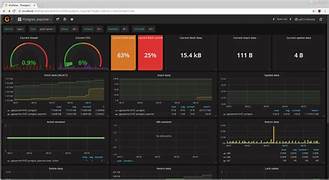
MySQL is one of the most popular open source database management systems. With its high performance capabilities, MySQL can handle huge data loads for mission-critical applications. However, to harness MySQL’s full power, database administrators need to regularly monitor and tune database performance. This guide will outline professional methods and tools to optimize MySQL for maximum speed and efficiency.
Why Monitoring and Tuning is Critical
Even if MySQL is initially configured for optimal performance, there are several factors that can degrade database responsiveness over time:
- Data growth - More records and larger indexes slow down queries.
- Suboptimal queries - Unoptimized queries consume excessive resources.
- Resource bottlenecks - Spikes in connections, traffic or load can constrain CPU, RAM or I/O.
- Configuration issues - Default settings may not suit specific workloads.
- Schema inefficiencies - Poorly designed tables and indexes impair performance. By proactively monitoring key MySQL metrics, admins can detect emerging issues before they significantly impact users. Tuning solves these problems and keeps performance consistently high.
Key Areas to Monitor
Like a mechanic diagnosing a car, Database admins should monitor several core areas to get a comprehensive view of MySQL’s overall health and performance:
- Query Response Time - Measure overall query latency to assess general responsiveness. Longer response times indicate bottlenecks.
- Throughput - Queries per second reveal if MySQL is handling the workload efficiently. Lower throughput signifies problems.
- Connection Usage - Monitor the ratio of used connections to configure connection limits optimally.
- Memory Utilization - Check if query caching and buffers are sized appropriately. Adjust to avoid swapping.
- I/O Activity - Review IOPS, latency and bandwidth to detect disk bottlenecks.
- CPU Usage - High CPU may indicate unoptimized queries. Ensure adequate cores to handle load. Admins should establish baseline metrics under normal loads to simplify identifying anomalies.
MySQL Monitoring Tools
Many excellent tools are available for monitoring MySQL environments:
- MySQL Enterprise Monitor - Provides visual performance dashboards and alerts.
- Percona Monitoring and Management - Open source platform to monitor MySQL metrics.
- SolarWinds Database Performance Analyzer - Tracks wait events, storage bottlenecks and queries.
- phpMyAdmin - Popular web GUI with insights into database status.
- MySQL Workbench - Visual database design and administration tool. The best options allow drilling down into granular performance data for specific databases, users and queries.
Tuning Techniques like a Pro
Once admins know what to monitor, several techniques can be applied to tune MySQL for optimal efficiency:
- Add Indexes Strategically - Use EXPLAIN to determine missing indexes slowing down queries. Avoid over-indexing.
- Tune Memory Allocations - Adjust key buffers, queries caches and thread stacks to improve performance.
- Optimize Slow Queries - Identify slow queries using AWRR feature and profile explain plans to improve logic.
- Choose Optimal Storage Engines - Select case-specific engines like InnoDB or MyISAM to maximize performance.
- Partition Tables - Break large tables into partitions to improve query speed and maintenance.
- Upgrade Hardware - Scale CPU, memory, disks and network bandwidth when necessary.
- Limit Concurrent Connections - Find connection sweet spot between responsiveness and overload.
- Use replication - Set up read replicas to distribute query load and scale horizontally. Admins should repeat the monitoring and tuning cycle regularly as workloads evolve over time.
Conclusion
Like an expert mechanic, database administrators need to master monitoring and tuning techniques to keep MySQL humming along at peak efficiency. Establishing baselines, utilizing robust tools and applying best practices separates MySQL masters from novices. With optimized performance, MySQL can power data-driven innovation and business objectives. Use this guide to troubleshoot issues before they become user problems. Your proactive care keeps the MySQL engine finely tuned.

shift + ⏎ to add a new line,




